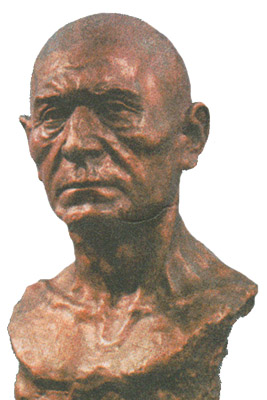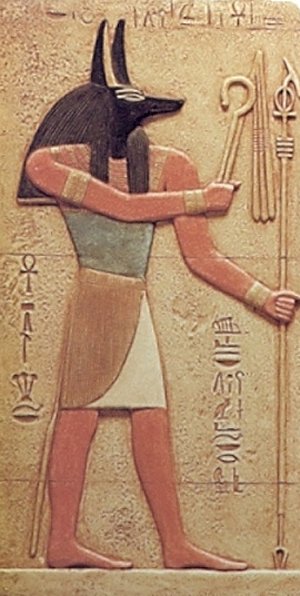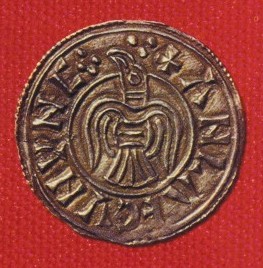by Moe | Mar 21, 2015 | DNA, History of the Brotherhood
 The mysterious origins of the Saxons before they had merged with the Angles and various other tribes to then become Anglo-Saxons, is somewhat of a mystery. A mysterious connection which I have found is in ancient Central Asia, related to a Scythian tribe called the Sacae or Saka and also another long lost tribe known in ancient times by the Chinese as the Wusun or Usun.
The mysterious origins of the Saxons before they had merged with the Angles and various other tribes to then become Anglo-Saxons, is somewhat of a mystery. A mysterious connection which I have found is in ancient Central Asia, related to a Scythian tribe called the Sacae or Saka and also another long lost tribe known in ancient times by the Chinese as the Wusun or Usun.
These two tribes would later merge to then be called the Sacae-Sun or Sako-Usuni, and more commonly known to us today as the “Saxons.” These same Saxons we find several centuries later when they would later be found in Britain, Ireland and Scotland, with many more tribes such as the Angles and Picts.
These tribes of the Saxons would later merge into one tribe that we know as the “Anglo-Saxons.” (more…)
Moe is the founder of GnosticWarrior.com. He is a father, husband, author, martial arts black belt, and an expert in Gnosticism, the occult, and esotericism.
by Moe | Feb 7, 2013 | Featured, History of the Brotherhood
 In an ancient hymn to the god Amon-Ra, it is said that “the gods gather as dogs round his feet.” This connection between dogs, humans, kings and the gods goes back thousands of years. They were not only a pet for our ancient ancestors as they are today for many people, but were also adored as gods and even kings took on the title “dog of the sun,” or “head king.”
In an ancient hymn to the god Amon-Ra, it is said that “the gods gather as dogs round his feet.” This connection between dogs, humans, kings and the gods goes back thousands of years. They were not only a pet for our ancient ancestors as they are today for many people, but were also adored as gods and even kings took on the title “dog of the sun,” or “head king.”
This head king we clearly see in Anubis (Anpu), the dog headed Egyptian God of the judgment, protection and the divine guide to the dead for their journey into the afterlife. In later times, during the Ptolemaic period, Anubis was merged with the Greek god Hermes, becoming Hermanubis.
The Cult of Hermanubis was located in uten-ha/Sa-ka/ or Cynopolis, a place whose Greek name simply means “city of dogs”. In the name uten-ha/Sa-ka we can clearly see the ancient Persic name for Sak, meaning “dog.” The word Sak was the name of an ancient tribe called the Sakai or Saka and Sacse, Saha, Sahia, of India; or the Median Straxa, which are all mutations of the same word Sak (dog). The city of dogs is where I believe the story from the dogs of the sun, dog priests and dog kings had begun. (more…)
Moe is the founder of GnosticWarrior.com. He is a father, husband, author, martial arts black belt, and an expert in Gnosticism, the occult, and esotericism.
by Moe | Jan 29, 2013 | Featured, Meaning of Symbols
 In my last article titled, Wusun Merge With The Saka to Become the Saxons, I had introduced my theory in regards to the origins of the Saxons. In this research presented online I have detailed various tribes such as the Saka and Wusun, who had resided in Central Asia and then later merged with one another between the 7th and 3rd centuries B.C. This union of the tribes known as the Saka and Wusun is what I believe had created a new tribe that we know of today as the “Saka-Suns” or in English as the “Saxons.” Much of my research for my first article on this connection was taken from Chinese and Greek historical records that detail these events.
In my last article titled, Wusun Merge With The Saka to Become the Saxons, I had introduced my theory in regards to the origins of the Saxons. In this research presented online I have detailed various tribes such as the Saka and Wusun, who had resided in Central Asia and then later merged with one another between the 7th and 3rd centuries B.C. This union of the tribes known as the Saka and Wusun is what I believe had created a new tribe that we know of today as the “Saka-Suns” or in English as the “Saxons.” Much of my research for my first article on this connection was taken from Chinese and Greek historical records that detail these events.
Today I would like to list more details that I have found on the mysterious and unknown origins of the Wusuns before they may have merged or mixed blood with other tribes such as the Saka in Central Asia. The questions I will address in my attempt to find the truth are; Were the Wusun the true natives of this land and were tribes such as the Scythians and Sakas an invading peoples? Or was it the Scythians who were natives to the land and the Wusun unwelcome or even welcomed visitors? Can ancient symbols and or DNA help identify who these peoples actually were and or connect them with their ancestors or people still living today? (more…)
Moe is the founder of GnosticWarrior.com. He is a father, husband, author, martial arts black belt, and an expert in Gnosticism, the occult, and esotericism.
by Moe | Aug 30, 2011 | Ecclesiastical History of England
THE year after that in which Caedwalla died at Rome, that is, 690 after the Incarnation of our Lord, Archbishop Theodore, of blessed memory, departed this life, being old and full of days, for he was eighty-eight years of age; which number of years he had been wont long before to foretell to his friends that he should live, the same having been revealed to him in a dream. He held the bishopric twenty-two years, and was buried in St. Peter’s church, where all the bodies of the bishops of Canterbury are buried. Of whom, as well as of his fellows of the same degree, it may rightly and truly be said, that their bodies are buried in peace, and their names shall live to all generations. For to say all in few words, the English Churches gained more spiritual increase while he was archbishop, than ever before. His character, life, age, and death, are plainly and manifestly described to all that resort thither, by the epitaph on his tomb, in thirty-four heroic verses. The first whereof are these:
“Here in the tomb rests the body of the holy prelate, called now in the Greek tongue Theodore. Chief pontiff, blest high priest, pure doctrine he set forth to his disciples.”
The last are as follows:
“For September had reached its nineteenth day, when his spirit went forth from the prison-bars of the flesh. Mounting in bliss to the gracious fellowship of the new life, he was united to the angelic citizens in the heights of Heaven.”
Bertwald succeeded Theodore in the archbishopric, being abbot of the monastery called Racuulfe, which stands at the northern mouth of the river Genlade. He was a man learned in the Scriptures, and perfectly instructed in ecclesiastical and monastic teaching, yet in no wise to be compared to his predecessor. He was chosen bishop in the year of our Lord 692, on the first day of July, when Wictred and Suaebhard were kings in Kent; but he was ordained the next year, on Sunday the 29th of June, by Godwin, metropolitan bishop of Gaul, and was enthroned on Sunday the 31st of August. Among the many bishops whom he ordained was Tobias, a man instructed in the Latin, Greek, and Saxon tongues, and otherwise of manifold learning, whom he consecrated in the stead of Gedmund, bishop of the Church of Rochester, who had died.
Next: How the holy man, Egbert, would have gone into Germany to preach, but could not; and how
Index
Moe is the founder of GnosticWarrior.com. He is a father, husband, author, martial arts black belt, and an expert in Gnosticism, the occult, and esotericism.
 The mysterious origins of the Saxons before they had merged with the Angles and various other tribes to then become Anglo-Saxons, is somewhat of a mystery. A mysterious connection which I have found is in ancient Central Asia, related to a Scythian tribe called the Sacae or Saka and also another long lost tribe known in ancient times by the Chinese as the Wusun or Usun.
The mysterious origins of the Saxons before they had merged with the Angles and various other tribes to then become Anglo-Saxons, is somewhat of a mystery. A mysterious connection which I have found is in ancient Central Asia, related to a Scythian tribe called the Sacae or Saka and also another long lost tribe known in ancient times by the Chinese as the Wusun or Usun.


